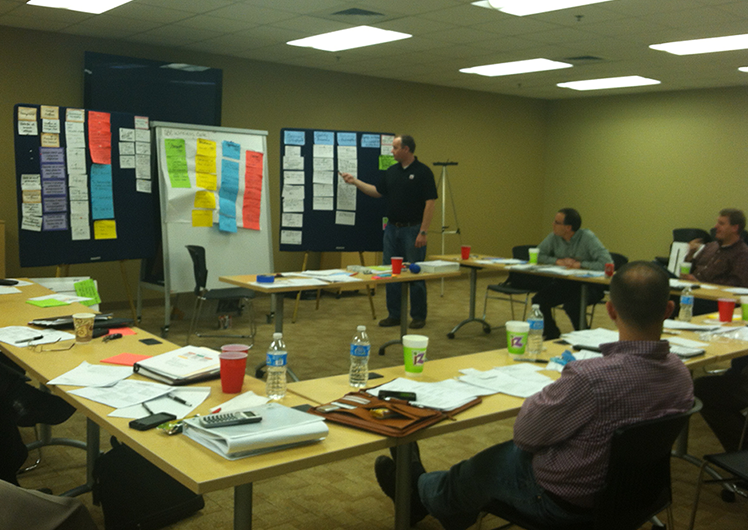Roll Up Your Sleeves – Living & Leading in a World of Constant Change, Part 7
From March 23th to 30th we reviewed these 6 concepts:
One Unshakable Truth – Everyone has unseen battles they are fighting. Be kind.
#1 Change is not the same as transition.
#2 Personality matters.
#3 Role clarity counts.
#4 Principles set the pace.
#5 Purpose is power.
#6 Process matters.
Today let’s look at #7 Endings let us begin again. Acknowledge and accept that the past is behind you and that the future in front of you is worth working through, because it creates forward momentum. Momentum is a wonderful thing.
At the beginning of the series, I said that I was not going to refer to any current situations but simply give you principles and let you apply them, as you see fit. But this past week I’ve spoken to many leaders whose organizations have either been shut down completely, are half staffed and are working in virtual teams. I’ve heard from these leaders that they can’t sleep at night, feel a heavy burden all day, struggling with hard decisions that impact the lives and livelihoods of many people. They feel like their teams were pulling apart due to the separation requirements. They want to help their folks , but with everything on their plate, they are having a tough time coming up with effective ways to encourage people to pull together as this crisis lingers on.
An ex-military friend of mine who had served on the front lines once told me, “It’s hard to be creative when bullets are flying around your head.” As I listened these leaders’ internal battles, I was hurting for them, so I prayed for wisdom, pulled out my pen, and created something very practical they could apply immediately to help their people and teams regain their team spirit and sense positive momentum during these trying times.
Following is overview of what I designed. It is team communication strategy and some action ideas. I hope that you can apply something from this in your work and life.
Snapshot: This is a communication strategy and conversation plan designed to enhance unity and support the advancement of a healthy organization during a crisis situation. It Includes 4 team meeting agendas that can be used in either virtual or face-to-face team sessions.
Step1 – Create a Temporary Clarity Vision for the whole organization. This is done by defining a 2-months specific theme, goal or overall objective to rally around. One that will allow every employee to see how they can be a part and make a contribution to it. How do you do this ? Some organizations choose one of their core values or one key initiative or one big inspiring idea as their short-term clarity vision. It is also important to plan to have a celebration when things move back in-house or into your new normal. This celebration is to acknowledge things that were accomplished by teams working together during this temporary clarity vision period.
Step 2- Leadership Approach and Team Meeting Outlines
The Team Leader needs to communicate clearly, intentionally and often. When communicating: Be Empathetic, Be Frequent, Be Simple and Clear, Be Honest, Be Hopeful
Purpose of each meeting: The purpose of these four 15-30 minute weekly meetings is to keep people informed about any upcoming changes, acknowledge challenges both personally and at work, share ideas together and help one another.
Week one:
1. Read the purpose of this meeting: *we are here today to try to stay informed about any upcoming changes, acknowledge challenges both personally and at work, share ideas together and help one another.
2. Check-in question – “Most of our daily routines have changed. In adjusting to this, what one good thing has come from this time for you? What has been hard?” (30 seconds each person)
3. Cover department or division announcements and happenings
4. Share about the temporary clarity theme. Ask people to think about ways they can help.
Week two:
1. Remind the group of the meeting purpose
2. Check-in question – “What has gotten easier since our last meeting? What has gotten more difficult?”
3. Cover department or division announcements and happenings
4. Ask about “Temporary clarity theme” activities: “What positive thing have you thought about, done or heard / saw someone else do?”
Week three:
1. Remind them of the meeting purpose
2. Check-in question – Say “Today let’s talk about remembering that there are things you can control and the things you can’t control. Share a personal example of when you wasted energy on something that was outside your control. Ask if someone has an example as well and why remembering this important during this time?
3. Cover department or division announcements and happenings
4. Ask about “Temporary clarity theme” activities: “What positive thing did you do or see some on do to support our theme ?”
Week four:
1. Remind them of the meeting purpose
2. Check-in question – “Today let’s talk about the bigger picture and the belief that we will get through this. Let me ask you “Can you recall a loss, crisis or big changes you have been through before and survived? Looking back what did you learn from that time?”
3. Cover department or division announcements and happenings
4. Ask about “Temporary clarity theme” activities: “What are your ideas of ways we can celebrate our accomplishments related to ‘our temporary theme’ when we get back to working onsite?”
• If this goes on past the Week four, just go back to the Week one and follow they same series.
Most organizations already have regular team check-in meetings focused on day to day issues and challenges. So, if you apply this process it needs to be adjusted to fit your culture, and it should be to complement, not as a replacement for, a current meeting structure and routines.
Journal Entry: This process was designed for use in an organization, yet you’ve probably realized it could be easily adapted with your family, your small group or an official support group. Give it a try. I hope this will be an encouragement and create some momentum for the people in your leadership in life.
“A vision without a task is but a dream. A task without a vision is drudgery. A vision and a task is the hope of the world.” Inscription on a church wall in Sussex England 1730



